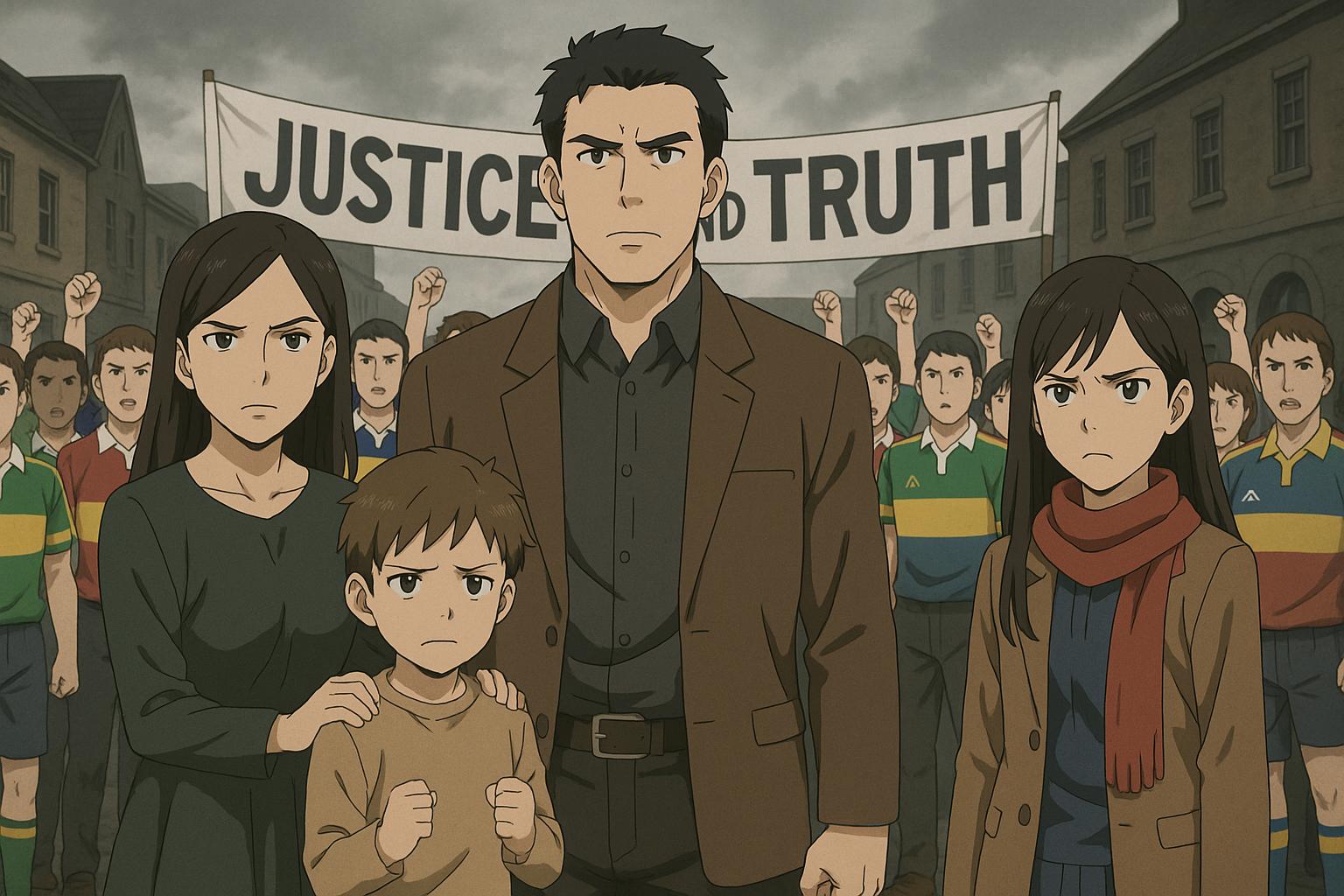On a poignant evening in Bellaghy, Co Londonderry, thousands gathered to support the Brown family in their call for a public inquiry into the murder of Sean Brown, a GAA official brutally slain in 1997. The town came to a standstill as participants, some travelling from distant counties such as Kerry, marched in solidarity from St Mary’s Church to the home of the Bellaghy Wolfe Tones GAC. Many wore their county's GAA jerseys, a visible sign of unity in a community still deeply affected by the tragedy.
Sean Brown, aged 61 at the time of his death, was ambushed by loyalist paramilitaries while closing the gates of the local GAA club. His killing remains unresolved, with no one ever convicted. The unresolved nature of his murder continues to haunt the community and his family, now advocating vehemently for a thorough investigation into the events surrounding that dark night in May 1997.
Recent developments have added urgency to the Brown family’s pursuit of justice. A High Court in Belfast previously mandated the UK government to conduct a public inquiry after ruling that the failure to do so was unlawful. Despite this, Northern Ireland Secretary Hilary Benn expressed opposition, arguing the case involves a profound constitutional principle regarding who holds the authority to order such inquiries: the Government or the judiciary. The government's hesitation is particularly troubling to the Brown family, as the prolonged uncertainty has led to feelings of despair and frustration.
The Police Service of Northern Ireland (PSNI), while stating they would not oppose an inquiry, voiced their belief that an inquest would not be the most effective method to investigate Brown’s death. This lack of consensus on how to proceed only serves to prolong the pain felt by the Brown family, who have openly shared their discontent with the delays surrounding the inquest process. Indeed, preliminary proceedings revealed troubling intelligence suggesting that over 25 individuals, including state agents, had links to the murder. Disturbingly, it was alleged that surveillance on a suspect was halted the very night of the ambush, raising questions about possible state involvement and the integrity of the investigation.
The community's support for the walk, which culminated in a spontaneous round of applause for the Brown family at the town centre, underscores a broader yearning for accountability and truth. This collective memory of tragedy and the quest for justice are not just issues for the Brown family; they resonate with many in a nation still grappling with its troubled past.
With the UK government signalling its intent to appeal the court's decision to hold an inquiry, the Brown family remains determined. They continue to seek what has been denied to them for decades: the truth about Sean Brown's murder and the circumstances that allowed such a heinous act to occur. As they stand at the forefront of this struggle, the call for transparency and justice grows louder, echoing through Bellaghy and beyond, reminding all of the unresolved scars of violence endured during a tumultuous period in Irish history.
As the community rallies behind their cause, the question remains whether the power of public sentiment will be enough to compel the authorities to fully reckon with the past and ensure that justice, at long last, prevails.
Reference Map
- Paragraphs 1, 2, 3, 4
- Paragraphs 2, 7
- Paragraphs 3, 6
- Paragraphs 5, 6
- Paragraphs 5, 6
- Paragraphs 6, 7
- Paragraph 6
Source: Noah Wire Services
